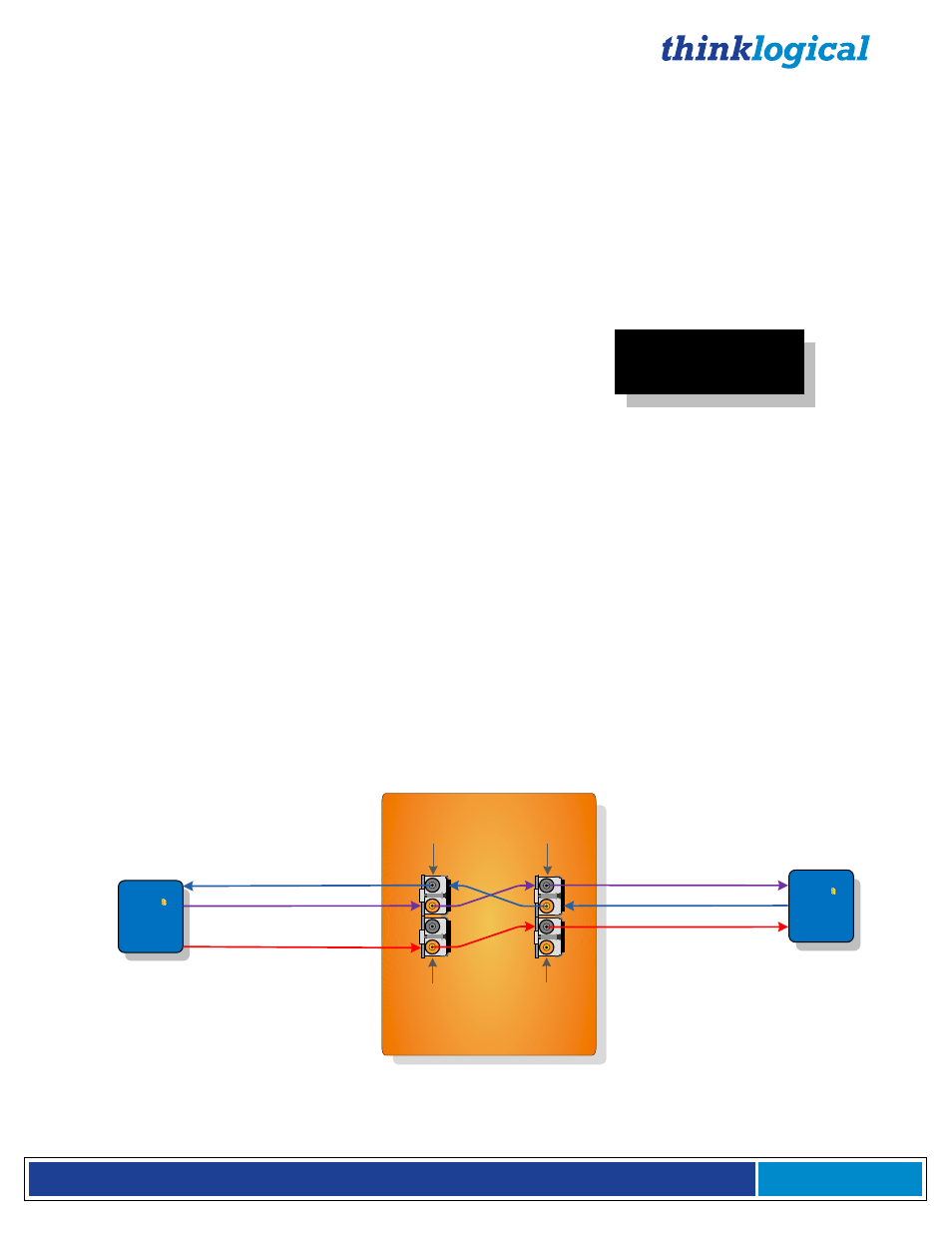4 theory of operation, Mrts technology – Thinklogical MX48 Router Manual User Manual
Page 9

®
M X 4 8 R o u t e r P r o d u c t M a n u a l , R e v . F , D e c . 2 0 1 4
Page 5
1.4 Theory of Operation
MRTS Technology
Thinklogical
®
MX48 Router is used together as a system with our Thinklogical Velocity Extenders
utilizing breakthrough, patent-pending technology for transmission and reception of DVI, keyboard,
mouse, and high-speed data peripherals. This technology, known as Multi Rate Transmission System
(MRTS), provides end-to-end data transmission with unparalleled performance. This new,
unique optic
platform enables multiple data streams to be transmitted long distances over single or multiple fibers with
complete reconstruction of the data clock at the destination end point. The result is perfect
synchronization with each transmitted stream.
Powered by
MRTS
Technology
All new products are designated with our
“Powered by
MRTS
Technology
”
logo.
MRTS is a highly reliable technology and delivers powerful benefits to our customers when combined
with our new SFP+ optics. The new MRTS Technology has the ability to transport every frame of a 1920
x 1200 @ 60Hz (or higher) video stream with no compression, along with all desktop peripherals
(keyboard, mouse, etc., including 480Mbps USB 2.0) with no perceptible latency. Moreover, these
signals can be transmitted distances from just a few meters up to 40 kilometers over single-mode or
multi-mode fibers.
MRTS allows for traditional AV implementations and video routing to be incorporated into the same
switch fabric, providing greater value, flexibility, performance and security. Additional unique capabilities
include the ability to support 6.25Gbps bandwidth per stream, between 50% and 100% higher than our
nearest competitors (typically 1.485Gbps to 3.2Gbps). This is significant because a single DVI stream
requires a 5.4Gbps data rate to accommodate
the 165MHz of video data. Our competitor’s lower
bandwidth capability is generally manifested in either dropped frames or lower resolution associated with
compressing schemes. Not so with MRTS Technology.
Video 1 &
Video 2
Video 2
Data Downstream
Video 1 & Data Downstream
Data Upstream
Data Upstream
Velocity
Tx
Switch
Fabric
SFP+ A
(Video/data IN,
data OUT)
SFP+ A
(Video/data OUT,
data IN)
SFP+ B
(Video IN)
SFP+ B
(Video OUT)
Digital Crosspoint Switch
Dual Head or Dual
Link DVI Source
DCS input
T
T
T
R
R
R
Velocity
Rx
Dual Head or Dual
Link DVI Destination
DCS output
UPSTREAM
DOWNSTREAM
Figure 4: MRTS Technology
